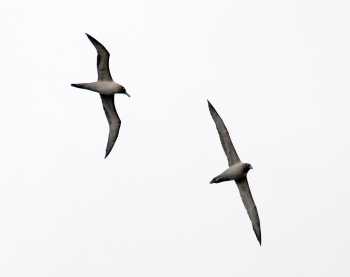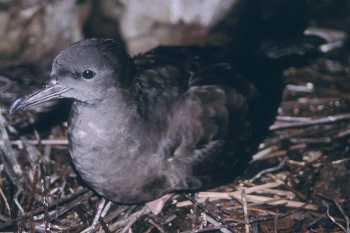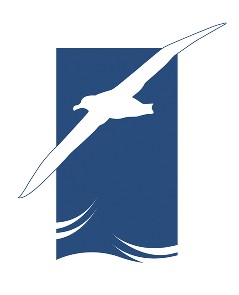Eduardo Gallo-Cajiao (Department of Biological Sciences, Macquarie University, North Ryde, Australia) has written in the journal Pacific Conservation Biology on the need for “adaptive management” to reduce the potential for albatross mortality (12 species at risk) in an Australian trawl fishery.
The paper’s abstract follows:
“To examine the current management of trawl fisheries is important to ensure albatross mortality is not being overlooked. By-catch of albatrosses in trawl fisheries occurs cryptically, which has hindered the development of conservation policy. The implementation of tasked seabird observer programmes in trawl fisheries, nevertheless, has shown that albatross mortality can happen at threatening levels. Consequently, mitigation measures have been developed and adopted in some trawl fisheries. Despite this, some trawl fisheries lack clear policy in relation to albatross mortality. In this context, I investigated the management of potential albatross mortality in a state trawl fishery, the New South Wales Ocean Trawl, in Australia. I conducted a literature search and addressed a set of questions to the responsible management agency through questions on notice at the State Parliament of New South Wales to understand albatross interactions from a policy standpoint. My results indicate that current policy neither encompasses albatross mortality nor is evidence-based. However, the combination of characteristics of this fishery and its overlap with albatross occurrence, along with the reported albatross mortality from other trawl fisheries, may warrant the need to collect empirical evidence on potential albatross interactions. Hence, the responsible management agency should take action according to legal obligations. In this scenario, I recommend the implementation of a tasked seabird observer programme, collection of baseline data, and adoption of adaptive management by the examined fishery. As uncertainty can hamper conservation efforts because management actions require evidence, it is imperative to fill current information gaps in this fishery. Additionally, an improved understanding of albatross mortality from individual trawl fisheries across different fisheries management jurisdictions will enable the prioritization of conservation efforts of this avian taxon in an international and multi-gear fishing context.”

Albatrosses mass behind a trawler, photograph by Graham Parker
Reference:
Gallo-Cajiao, E. 2014. Evidence is required to address potential albatross mortality in the New South Wales Ocean Trawl fishery. Pacific Conservation Biology in press.
John Cooper, ACAP Information Officer, 19 December 2014

 English
English  Français
Français  Español
Español 


